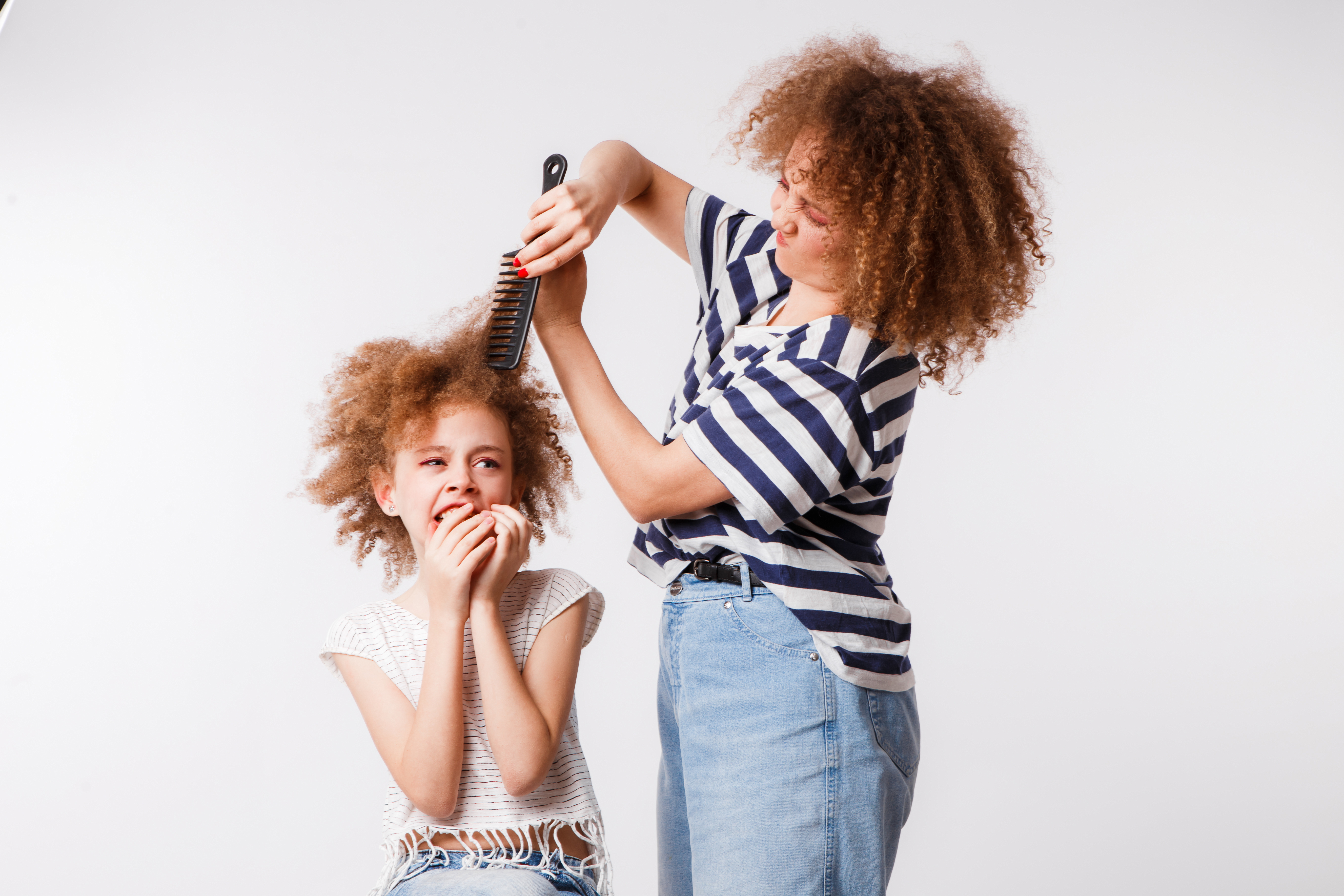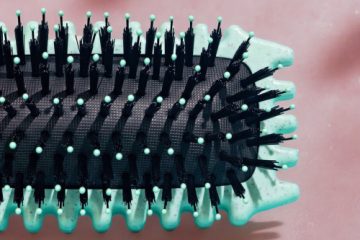Managing children’s curly hair can be challenging, especially when it comes to washing and styling. Here are some tips to make the process smoother and more enjoyable for you and your child.
Washing Children’s Curly Hair
Most children aren’t fans of hair washing, and long, drawn-out sessions can be challenging. At our sister shop, Curly Cuts, we find it’s easier and quicker to use a curly-friendly low poo instead of a no-poo or co-wash.
The technique required for co-washing or no poo cleansers can be complicated, and if not done correctly, it may lead to scalp issues. Our favourite combination for kids is EverEscents Rose Shampoo or Lavender Shampoo paired with Clever Curl Rich or Light Conditioner. This duo provides gentle cleansing and conditioning, making wash day less daunting.
Curly Pro Tip: Choose a product with an appealing scent.
Swimming: Protecting Against Chlorine
Swimming lessons can be harsh on curly hair, especially in chlorinated pools. We recommend using a deep cleansing, curly-friendly low poo regularly, such as EverEscents Fresh Mint Shampoo. Build-up from pool chemicals can prevent moisture from entering the hair shaft and can leave the hair tangled, dry, and brittle. It’s crucial to cleanse thoroughly to maintain healthy, moisturised curls.
Curly Pro Tip: Saturate the hair with water before swimming and apply a leave-in conditioner. Just like a sponge that’s already wet won’t absorb as much liquid, pre-wetting the hair helps minimise the amount of pool water it can soak up.
Styling Products for Children’s Curly Hair
Apply a curl cream generously on wet hair after washing to keep curls hydrated and defined. This helps with knots and provides an extra moisture boost. Leave-in conditioning sprays can be expensive, so consider making your own conditioning spray by mixing an organic curl cream with water. Remember to mix only what you need for each use, and don’t reuse a homemade product. After applying the curl cream, use a gel to define the curl and frizz.
Curly Pro Tip: Apply all styling products while your child is still standing in the shower. This method is less messy and allows you to quickly rinse off their body if needed after applying the products and plopping cap. Plus, the shower’s warm area helps keep them comfortable and less likely to complain about being cold.
Detangling
Children often get tangly hair, so it’s essential to have a routine to manage knots before they turn into dreadlocks.
Simply raking through knots in children’s hair won’t thoroughly remove them and can actually lead to more tangling. Plus, it tends to be more time-consuming, and with kids, the faster, the better.
For a more effective solution, use a curly detangling brush to detangle thoroughly.
Step-by-Step Guide to Detangling Curly Hair
- If you’re not washing the hair, make sure it is thoroughly wet.
- Generously apply a high quality conditioner with plenty of slip, like Clever Curl Rich Conditioner. Ensure you add plenty of conditioner and rope the hair for extra slip. This added slip will make it easier for the detangling brush to glide through the hair and minimise breakage.
- Start detangling from the bottom of the hair upwards, not from the top down, using your detangling brush, ensuring that all knots and tangles are gently worked out. This technique minimises pain and reduces the risk of hair pulling or breaking. When detangling, always start from the bottom and work your way up.
- Once all the tangles are removed, rinse the conditioner and apply curl cream for an extra layer.
Untangling Severely Matted Curls
We recommend seeing a curl specialist, as some knots can’t be removed and may cause more trauma to the hair follicle with severe pulling and may need to be cut out. However, the following tips may help:
A gentle motion to remove some dreadlocking from curly hair involves using your fingers in a spreading gesture to separate and detangle the hair gently.
- Isolate the dreadlock you want to detangle and secure away the rest of the hair.
- Generously apply a slippery conditioner to the dreadlock to help loosen the knots.
- Begin at the ends of the dreadlock. Use your fingers to pull apart tangled hair sideways in a spreading gesture to separate and detangle the hair gently.
- Once the knot has been loosened, you can gently use your detangling brush.
Curly Pro Tip: Letting your child choose their detangling brush can make the process more enjoyable and less daunting for them.
Drying Curly Hair
After washing, use a microplopping cap made from microfiber to dry the hair. Our microplopping caps are a hit with kids. Avoid using a hairdryer unless necessary, as children don’t need the extra fuss or potential heat damage.
Curly Pro Tip: If you need to use a hairdryer, always use a diffuser attachment. Our pic for a hairdryer is the Dyson dryer.
Budget Tips
If you’re on a budget and can only invest in one high-quality product, make it the conditioner. A good conditioner helps with detangling and provides essential moisture. You don’t need an expensive detangling brush either; our $12.95 detangling brush is a great all-rounder.
Curly Pro Tip: Make your own leave-in conditioner by mixing the conditioner with water in a spray bottle for a quick one-use leave-in conditioner.
Managing Long Curly Hair at School
For most schools, longer hair needs to be tied up. Use a satin scrunchie to be gentle on the curls and reduce breakage.
Curly Pro Tip: A scrunchie does not need to be silk. Silk is very overpriced, and satin works just the same way!
Dealing with Headlice
Headlice can be unavoidable. Don’t stress if you need to use a non-curly-girl-friendly product to eliminate them. It’s just not worth it, and the stress of the lice returning.
Once the lice are gone, do a detox and reset on the hair, using a deep cleansing shampoo and deep treatment. You may need to follow up with a few deep treatments to restore moisture. Products like the Moove Headlice Treatment have worked well for my kids, providing an effective solution.
Curly Pro Tip: Following a headlice treatment, follow up with a few deep treatments to regain moisture in the hair.
Why Trust These Tips?
As a qualified curly stylist and a parent, I’ve faced the challenges of washing and styling children’s curly hair. These tips are based on both professional experience and personal trials, ensuring they’re practical and effective.




